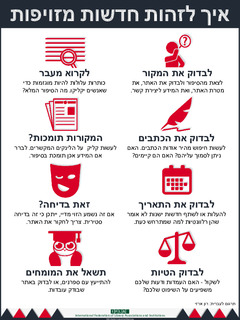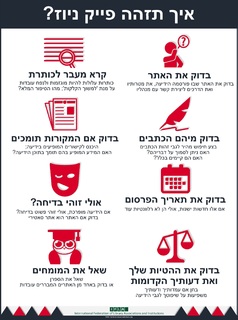Please use this identifier to cite or link to this item:
https://repository.ifla.org/handle/123456789/217Full metadata record
| DC Field | Value | Language |
|---|---|---|
| dc.rights.license | CC BY 4.0 | en_US |
| dc.contributor.author | International Federation of Library Associations and Institutions (IFLA) | - |
| dc.date.accessioned | 2021-02-12T12:30:09Z | - |
| dc.date.available | 2017-03-01 | - |
| dc.date.available | 2021-02-12T12:30:09Z | - |
| dc.date.issued | 2017-03 | - |
| dc.identifier.uri | https://repository.ifla.org/handle/123456789/217 | - |
| dc.description.abstract | Critical thinking is a key skill in media and information literacy, and the mission of libraries is to educate and advocate its importance. Discussions about fake news has led to a new focus on media literacy more broadly, and the role of libraries and other education institutions in providing this. When Oxford Dictionaries announced post-truth was Word of the Year 2016, we as librarians realise action is needed to educate and advocate for critical thinking – a crucial skill when navigating the information society. IFLA has made this infographic with eight simple steps (based on FactCheck.org’s 2016 article How to Spot Fake News) to discover the verifiability of a given news-piece in front of you. Download, print, translate, and share – at home, at your library, in your local community, and on social media networks. The more we crowdsource our wisdom, the wiser the world becomes. | en_US |
| dc.language.iso | he | en_US |
| dc.publisher | International Federation of Library Associations and Institutions (IFLA) | en_US |
| dc.relation.isversionof | https://repository.ifla.org/handle/123456789/167 | en_US |
| dc.rights | Please note that while the infographic as a whole is subject to a CC-BY 4.0 licence, individual icons may only be used separately in line with the terms of the licence for Flaticon. | en_US |
| dc.rights | https://www.freepikcompany.com/legal#nav-flatico | en_US |
| dc.rights.uri | https://creativecommons.org/licenses/by/4.0/ | en_US |
| dc.subject | Subject::Access to information | en_US |
| dc.subject | Subject::Fake news | en_US |
| dc.subject | Subject::Information literacy | en_US |
| dc.subject | Subject::Information society | en_US |
| dc.subject | Subject::Post-truth | en_US |
| dc.title | איך לזהות חדשות מזויפות | en_US |
| dc.title.alternative | How To Spot Fake News | en_US |
| dc.type | Infographics | en_US |
| dc.rights.holder | International Federation of Library Associations and Institutions (IFLA) | en_US |
| dc.audience | Audience::A Supportive Environment for Libraries | en_US |
| ifla.oPubId | 11174 | en_US |
| ifla.Unit | Units::Headquarters::Headquarters | en_US |
| dc.contributor.translator | Arazi, Ron | - |
| Appears in Collections: | IFLA Publications | |
Files in This Item:
| File | Description | Size | Format | |
|---|---|---|---|---|
| hebrew_-_how_to_spot_fake_news.pdf | איך לזהות חדשות מזויפות | 663.95 kB | Adobe PDF |  View/Open |
| איך_לזהות_חדשות_מזויפות_(How_To_Spot_Fake_News).jpg | איך לזהות חדשות מזויפות | 1.04 MB | JPEG |  View/Open |
This item is licensed under a Creative Commons License

